Publications
Beneficial Exercises for Flutists
The chair of the Performance Health Care Committee recommends these exercises to help reduce playing-related pain. Read more about them in the spring 2020 issue of The Flutist Quarterly. In addition to those discussed in the article, a bonus exercise for neck and shoulder pain is included here.
Chest Stretch
Put your arm in a doorway with your elbow at 90 degrees. Squeeze your shoulder blade back and down toward your low back and twist your body away from the door. If you don’t feel much, try bringing your arm up higher. Hold for 30 seconds.
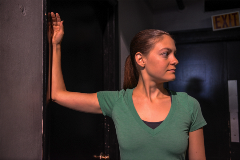
Wrist Stretch
Facing a flat surface with straight elbows, turn your fingers toward your body and lower your arms until the tops of your hands are flat on the table, if possible. (Don’t force them; take them to maximum stretch and hold gently.) Touch your fingers and thumbs together; try to lift your knuckles off the table. This should not be possible. If you can do this, you are leaning too far forward or your elbows are bent. Hold the stretch for 20 seconds, rest 10 seconds, and hold 30 more seconds. Come out of the stretch gently.
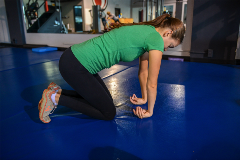
For a more intense stretch, turn your hands so that they are palms down on the table with fingers pointed toward your body. (Don’t force them flat if wrists are too tight; take them to maximum stretch and hold gently.)
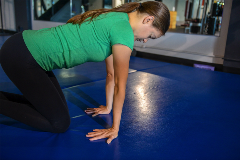
Upper Back and Shoulder Strengthener: Prone T Exercise
Stand with your feet hip width apart, knees slightly bent. Push your hips backwards, keeping your spine neutral, so that you are leaning slightly forward. Raise your arms straight out to either side, with thumbs pointing to the ceiling and palms facing forward, keeping shoulders away from ears. Think about bringing the bottom of your shoulder blades together. Do 15 times.
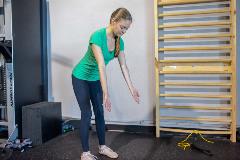
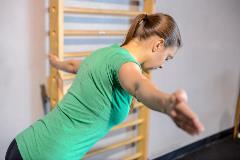
Core Strengthener: Deadbugs
Lie on your back, with knees bent and feet flat. Pull your belly button toward your spine and mash your low back into the floor. Raise your arms overhead and drop them alternately behind your head as far back as possible without causing pain.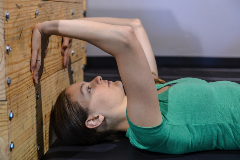
For additional strength building, lift both legs to a 90-degree angle and drop one heel at a time toward the ground.
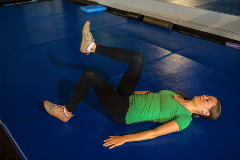
BONUS: Tight Neck Muscles
Flutists turn their heads to the left but also tilt them somewhat forward and down to the right. As a result, two muscles tend to get overused and cause problems: the sternocleidomastoid (SCM) and the levator scapulae.
The SCM attaches to the collarbone near the sternum and inserts on the skull just behind each ear, turning the head and also flexing it forward. The levator scapulae muscle attaches to the upper part of the shoulder blade on the inside and goes up the neck, where it inserts on the C1–C4 vertebrae of the neck. It helps shrug the shoulder upwards.
With the advent of cell phones and other screens, the levator scapulae can become shortened while the SCM becomes tight on one side and weak on the other. This may cause headaches, pain in the back of the neck, or pain on the inside of the shoulder blade (the rhomboid muscle), and—combined with tight chest muscles—can cause the rhomboids to become weak and overstretched, causing pain. Relaxing the SCM and the levator scapulae and strengthening the rhomboids can be the trifecta to bring the upper body back into balance.
Try these two back to back, in the order given here. If either of them doesn’t feel good, don’t do it.
-
Convention
- 2025 Convention | Atlanta, GA
- Convention Archives
- Future Conventions
- Scholarships & Competitions
- Resources & Publications
- Programs
-
Committees
- About Our Committees
- Committee Webpages
- NFA Committees Blog
- Committee Web Presence Guidelines
- Giving
- About
- Community
- PayPal
- Walfrid Kujala Tributes
The Flutist Quarterly
